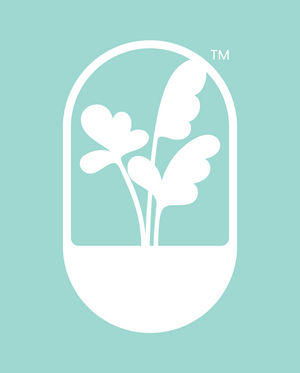
The Number One Watering Mistake That's Killing Your Plants
(Image source: Swell Magazine, April 2025 Edition)
The Best Way to Water Your Plants
When it comes to plant care, people often to overcomplicate things. Mist a little here, pour in a leftover drink bottle in there, cross your fingers, and hope for the best. But the secret to truly thriving plants? Drench them.
It makes a lot of sense to copy what Mother Nature does outside. It doesn't take the skill of green-thumbed gardener to know that plants and lawns look their best after a rain shower, so let's learn to mimic those downpours inside your home too.
If your watering routine doesn’t involve a solid drenching, your plants are thirstier than you think. Underwatering is one of the biggest plant killers for a reason!
 (Our Chief Plant Mum, Louise, usually carries all her houseplants outside to give them a good soaking, Image source: www.perkypod.com.au)
(Our Chief Plant Mum, Louise, usually carries all her houseplants outside to give them a good soaking, Image source: www.perkypod.com.au)
Drenching Feeds the Deep Roots
Think about this: if you only water the top layer of soil, what happens to the roots at the bottom? They stay dry, missing out on the hydration they desperately need. And the water at the top? Well it's prone to evaporation so it can be gone before your plant has even had much benefit.
When you properly drench your plant, water travels all the way down, reaching those deep roots that do most of the heavy lifting. A little sip here and there simply is not enough—those roots need a thorough drink, or they’ll stay thirsty and struggle to support the plant.
Even worse, when the plant starts to look sad, we often think the plant needs another drink of water. But, unless the soil has had time to dry out since the last watering session, watering again too soon can result in "overwatering". This is actually the biggest killer of plants because the soil and root ecosystem needs to dry out in between each watering session if they're going to give enough vital oxygen to the plant.
What Does "Drenching" Actually Mean?
Drenching means soaking the soil until it’s thoroughly wet. That means watering all over the surface area, not just in one little spot, and continuing until water is pouring—yes, POURING—out the bottom of the pot. If you’re not seeing steady drips (or, preferably, a mini waterfall), you haven’t given it enough. Think of it like a sponge: if you only wet one corner, the rest stays dry. Your plant’s soil works the same way.
Why is it so important to ensure all the roots are hydrated, even the ones around the very edges of the pot? Well, every plant has a drip line that exists where the outer extremities of the leaves and branches reach. This is because tree roots have evolved to find water where it is most likely to fall after it rains (as well as down deep, where underground waterways occur). Horticulturists and farmers know that a plant's "drip line" is where all the water and fertiliser nutrients are best absorbed up into a plant.

Drenching is also beneficial as it "flushes" the soil from unhealthy levels of salt and excess minerals that can build up over time. These excesses are caused by tap water and fertiliser, and prevent the plants from being able to absorb crucial nutrients. To ensure plants are flushed properly, you can even repeat the process as soon as the first round of water has drained away for optimal results. Outdoor plants drain naturally, so flushing occurs automatically.
Drainage is Everything
Now, before you turn your home, courtyards and balconies into a flood zone, let’s talk about why drainage matters. Water should flow freely through the soil and out the bottom rather than sitting there stagnating. (Side note: have you ever smelt water that's been stuck in the bottom of a pot?!)
Drenching is not the same as "overwatering", though many people mistakenly think this is the case. Rather, overwatering actually means that excess water is getting trapped at the bottom of the pot, causing roots to rot. Or that you're watering too frequently, which we covered earlier.
In short, the real issue isn’t too much water during each watering session—it’s that the water isn’t escaping fast enough. That’s why good drainage holes and fast-draining soil are absolutely non-negotiable.
Bottom Watering
A quick word on bottom watering too. Many people find that their plants enjoy this method of placing their plant in a bowl of water and leaving it there to soak for awhile. This essentially allows the plant to be thoroughly drenched from the bottom up and the plant can take what it needs.
However, there are four main negatives with this method:
- Time consuming. Proponents of bottom watering often just use one bowl or bucket of water and they put one plant in after another, usually for at least 10-20 minutes per plant. That's a lot of time waiting around and rotating your plants through!
- Messy drainage. Once the plant is removed from the bowl, it needs somewhere to drain. Do you put in a sink? On a towel? The time, mess and space required for drainage can be difficult for people to deal with, especially if they are elderly or live in a small space such as an apartment.
- Large plants. Bottom watering doesn't suit large plants as they are just too heavy to manoeuvre in and out of water (if you can find a bowl or bucket large enough), plus the amount of water that drains out of the bottom when removed from the bucket can be quite excessive.
- More mess. The plant can tip over when it's in the water, especially if it's floating off the bottom (before it's had a chance to absorb enough water to weigh it down) or if the base of the bowl is not flat. When this happens, dirt can tip into water bowl and create quite a mess.
In comparison, thoroughly drenching your plants by pouring water over the top and having your plants in a free draining area can be a much easier solution, especially for larger plants or if you have more than a few plants in your collection.
Drench Without the Mess: Enter PerkyPod
Okay, so we’ve established that drenching is the key to happy, healthy plants. But what about the aftermath? Puddles on your floor, water stains on your furniture, and that awkward moment when your favourite pot leaks all over the place? Or how about the time-consuming and often heavy task of moving all your plants to a bath, shower, sink or lawn where the puddles are easier to clean up? That’s where PerkyPod saves the day.
With PerkyPod's built-in water drainage and catchment system, you can drench your plant to perky perfection without worrying about leaks or messes. Just water thoroughly, let PerkyPod take care of the drainage, then empty the catchment drawer when you have a spare moment.
Simple, effective, and perfect for people who want thriving plants without the drama.
So go ahead—ditch your cautious watering routine and embrace the drench. Your plants will reward you with bigger leaves, stronger roots, and a whole lot of growth. And with PerkyPod, you get all the benefits without the usual headaches.

(Image source: www.perkypod.com.au)
Happy watering!

